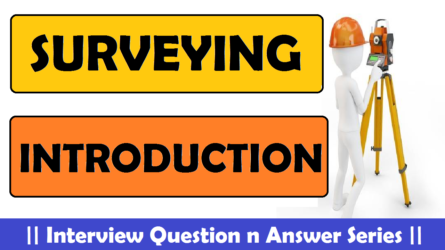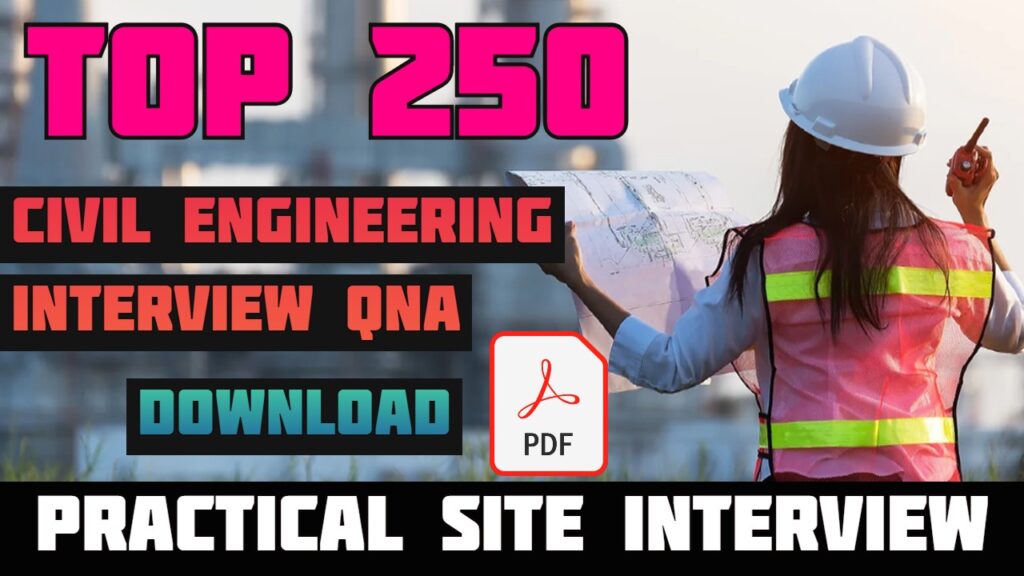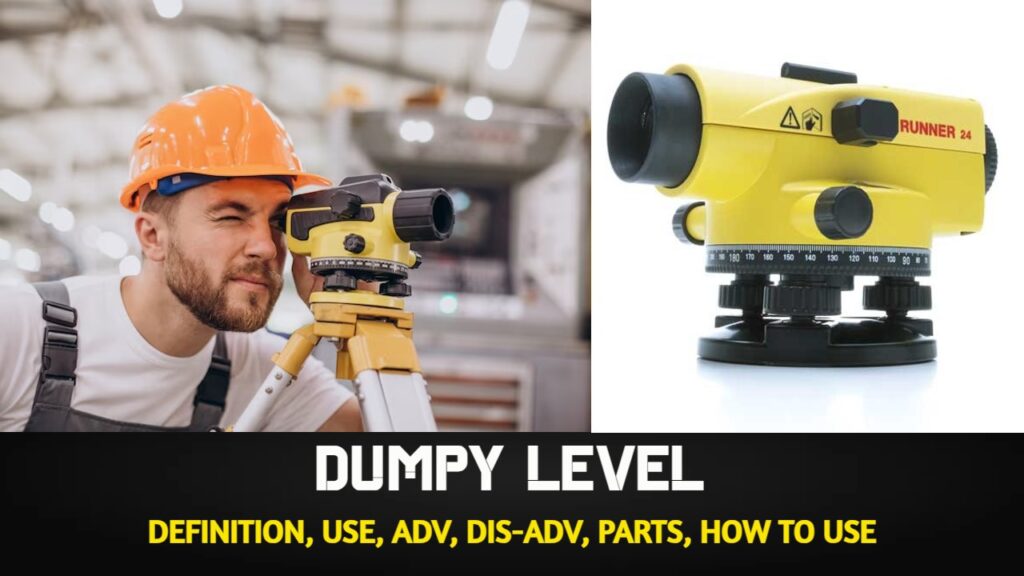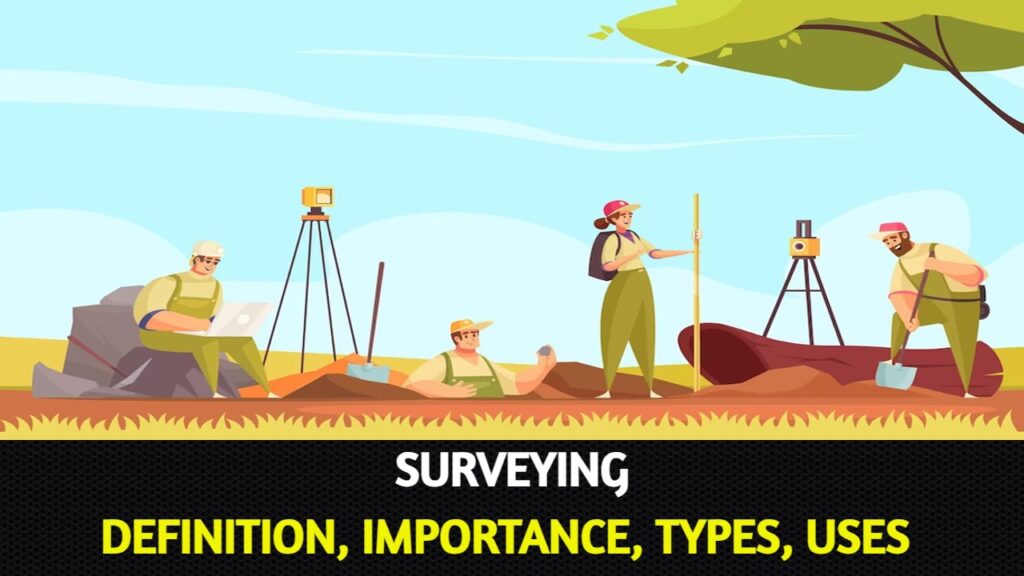In this post we will discuss Some Important Surveying Q & A for Freshers
Surveying Q & A for Freshers
Q.1. What is the fundamental difference between Surveying and Levelling?
Answer: In Surveying, the measurements are taken in the horizontal plane, but in Levelling, they are taken in the vertical plane.
Q.2.What is the fundamental difference between Plane surveying and Geodetic surveying?
Answer: In the Plane surveying, the curvature of the earth is not considered. But in Geodetic surveying, the curvature of the earth is considered.
Q.3.What do you mean by the terms ‘ Topographical map’ and ‘Cadastral map’?
Answer: A map which shows the natural features of a country such as rivers, hills, roads, railways, villages, towns etc. It is known as Topographical map and one which shows the boundaries of estates, fields, houses, etc. It is known as a Cadastral map.
Q.4. What is the main principle of Surveying?
Answer: The fundamental principle of surveying is to work from the whole to the part.
Q.5.How is a chain folded and unfolded?
Answer: In order to fold the chain, a chainman moves forward by pulling the chain in the middle so that two halves come side by side. Then he places the pair of links on his left hand with his right hand until the two brass handles appear at the top.
To unfold the chain, a chainman holds the two brass handles in his left hand and throws the bunch with his right hand. Then one chainman stands at a station holding one handle and another chainman moves forward by holding the other handle.
- Top 20 Interview Walk-In Q & A for Civil Engineers
- Interview Question asked in Shapoorji
- Interview Question asked in Gammon India
- Basic Interview Q & A For Civil Engineers
- Civil Engineers Interview Q & A
- HR Interview Q and A For Freshers – Part 2
- TOP 10 HR Interview Q and A FOR FRESHERS
- Volume Of Different Shapes
- AREA OF DIFFERENT GEOMETRICAL SHAPES
Q.6.In a chaining operation, who is the leader and who is the follower?
Answer: The chainman at the forward end of the chain who drags the chain is known as the leader. The one at the rear end of the chain is known as the follower.
Q.7.While chaining a line, you have to measure through a steep sloping ground. What method should you apply?
Answer: The Stepping method.
Q.8.Two stations are not intervisible due to intervening high ground. How will you range the line?
Answer: The range is to be done by the reciprocal method.
Q.9.What do you mean by normal-tension?
Answer: The tension at which the measured distance is equal to the correct distance (i.e. when sag correction is neutralised by pull correction) is known as normal tension.
Click For Civil engineering Videos
Q.10.What do you mean by RF?
Answer: The ratio of the distance on the drawing to the corresponding actual length of the object is known as RF.
Q.11.What is the difference between the Plain scale and the Diagonal scale?
Answer: The Plain scale represents two successive units. The diagonal scale represents three successive units.
Q.12.What is a hypotenusal allowance?
Answer: When one chain length is measured on sloping ground, then it shows a shorter distance on the horizontal plane. The difference between the sloping distance and horizontal distance is known as the Hypotenusal allowance.
Q.13.How many ranging rods are required to range a line?
Answer: At least three ranging rods are required for direct ranging, and at least four for indirect ranging.
Q.14. What is the length of one link in a 20 m chain?
Answer: The 20 m chain is divided into 100 links. So, one link is 0.2 m, i.e., 20 cm long.
I hope you find this information useful. If there is something that I have missed or I do not know, you can comment and tell me which I will try to rectify as soon as possible.
If you have liked this post of mine, then use the social link given below and share it among your friends on social media. Thanks
SHARE THIS POST, IF YOU LIKE IT !!
Padhega India Tab Hi Badhega India | पढ़ेगा इंडिया तब ही बढ़ेगा इंडिया







lab technician